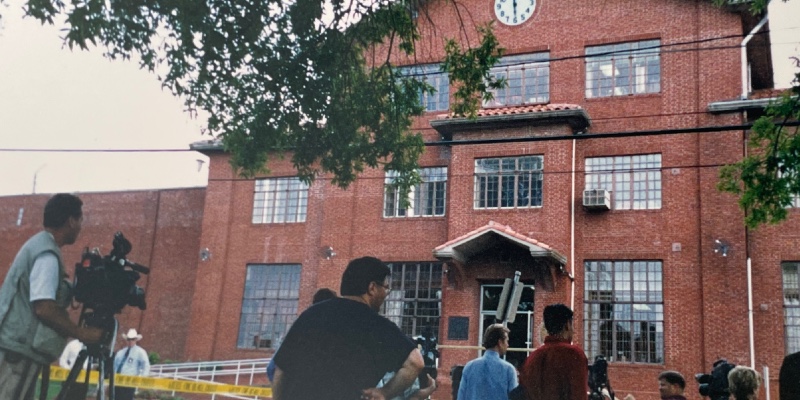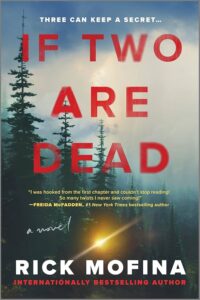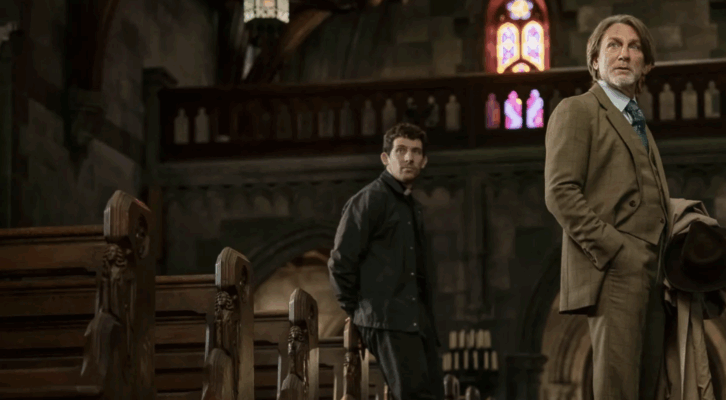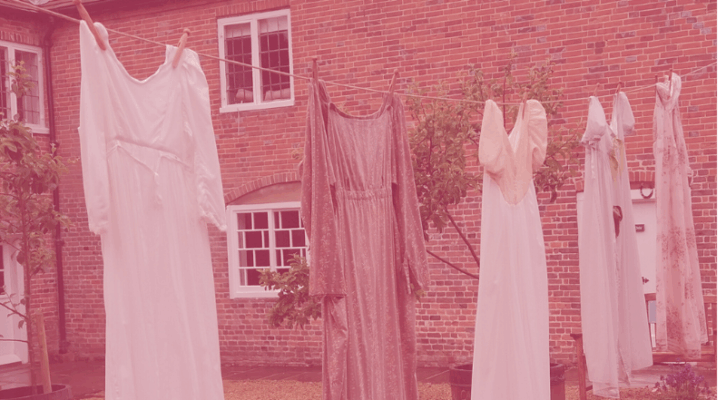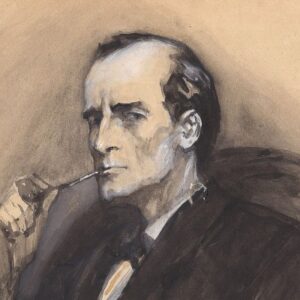Image: Journalists, including the author, gathered at the “Walls Unit” at the Texas State Penitentiary in Huntsville, Texas. (Uncredited, provided by the author.)
One day, along my journey from crime reporter to crime novelist, I was led, step by step, into an execution chamber to the exact spot where condemned killers took their last breaths.
But unlike them, I walked out, left to ponder the experience. For centuries, philosophers and writers have examined capital punishment and the nature of executions. Plato looked at it as a tool for society, suggesting its application be used in cases of irredeemable evil. Aristotle and Aquinas supported its careful use to protect society, while Seneca was critical of the cruelty of public executions.
Throughout history, from Dante Alighieri to Johann Wolfgang Von Goethe, writers and poets have levied criticism, or drawn inspiration, from executions. Recent examples include Charles Dickens who was horrified after witnessing a public execution and used his experience in A Tale of Two Cities and Oliver Twist. Victor Hugo, after watching a public guillotine execution, channeled his views on the death penalty while detailing the agony of a man awaiting execution, in his short novel, The Last Day of a Condemned Man.
Fyodor Dostoevsky, he lived the terrifying moment. After he was arrested and imprisoned for alleged subversion, Dostoevsky and his fellow prisoners were taken to a square in St. Petersburg. They were dressed in death shrouds and tied to stakes before a firing squad preparing to shoot them. Suddenly, an order arrived, commuting the sentence. Dostoevsky’s soul-shaking brush with death changed him. He used it to shape his work, relating his psychological torment through the anguish of a man awaiting execution, in his novel, The Idiot.
Contemporary writers have also explored death row and executions in their books. A few come to mind; like In Cold Blood by Truman Capote; A Lesson Before Dying by Ernest J. Gaines; The Chamber by John Grisham; and Stephen King’s The Green Mile. And there is Agent of Death, The Memoirs of an Executioner, by Robert Greene Elliott, who operated the electric chair at Sing Sing’s Death House.
I’m sure I’ve left out others.
My moment to look into the last day of a condemned man came when I was a journalist covering a death penalty case in the late 1990s. Researching the story took me across Texas to Austin, San Antonio, Houston, Lufkin and Huntsville where I interviewed people connected to events. I won’t go into names, or details of the case here; that’s not what this reflection is about.
In reporting other stories, I’d gone inside a number of prisons in Canada, the U.S., and the Caribbean, to talk to rapists and killers, including face-to-face interviews with murderers on death row, hearing harrowing accounts of their crimes, or how their victims haunted them in their cells. I had never witnessed an execution. From the outset of the Texas case, I applied to be a media witness – for journalistic and historic reasons.
My request was denied, which is a story for another day.
However, during one of my trips, officials with the Texas Department of Criminal Justice in Huntsville, offered me something else: a physical walkthrough the execution process. There was a condition. I could not report on it for my news agency, it was to be considered background, to aid my coverage.
On one of my trips, there was an 11th-hour stay in the case. I filed a story. But my next day in Texas was a free day, as my departing flight home out of Houston didn’t leave until the following morning. I called officials at Huntsville and they made good on their offer. Soon, I found myself being walked from the admin building, and escorted inside the prison, the Texas State Penitentiary and the so-called “Walls Unit,” where executions are carried out.
Decades have passed since then, and some aspects may have changed, but this is how I remember the day when I was taken through the execution process as if I were sentenced to die.
I learned that a number of steps took place in the weeks leading up to my scheduled execution. I could request to have a TDCJ Chaplin, or my spiritual advisor present inside the execution chamber during the time of my death.
In the days prior to my execution, I could request to have my body donated for medical research. Or, my family may make arrangements through the coordinating funeral home to claim my body.
I would also arrange to distribute my property or any money in my inmate trust fund. At this time, I also confirm to officials the names on my witness list for viewing my execution.
One week before my execution date, guards start an execution watch log, noting my activities every 30 minutes in the six days prior to execution and every 15 minutes for the remaining 36 hours.
Executions are scheduled for 6 p.m.
On the morning of my execution, after visits with my family, I am put in restraints and transported from the Ellis Unit, a sprawling complex holding some 2,500 inmates including those on Death Row. (I believe Death Row is now housed at the Polunsky Unit in Livingston.) The Ellis Unit, still in use, is situated on farmland and bordered by snake-infested swamps, it’s several miles north of the Huntsville Walls Unit, which houses the execution chamber.
The Huntsville Walls Unit, in the heart of town, was erected in the 1840s. It was nicknamed the “Walls Unit” due to its towering walls. According to prison lore, during rain storms its imposing brick walls turn the run-off blood red.
If I don’t have anyone to claim my remains, an open grave waits about a mile away in Captain Joe Byrd Cemetery; maintained by inmates who call it the graveyard of “the unwanted and the unloved.”
When my prison vehicle arrives at the Walls Unit, it is backed up to a door within the secured yard. I am then escorted from the vehicle inside to the death house.
It is confined with a handful of empty cells, beige in colour.
Inside, I am strip searched and given clean prison clothes and placed in my death cell.
Beyond my bars stands a small table with a white cloth, bible and phone. I am allowed calls for goodbyes. Around 3:00 to 4:00 p.m. I may have visits by my lawyer, then my spiritual advisor, to guide me through my last hours.
I will likely stare at the two additional dedicated phone lines on the wall of the death house: One to the Governor’s Office, the other to the Attorney General’s Office. The lines will remain open during the process in the event of a last-minute stay.
Around 4:00 p.m., if I have not declined, I am served my last meal. (Texas has since discontinued the practice of last meals.)
At this time, my execution witnesses are taken into a separate room in the prison and further briefed on the procedure. Execution witnesses for relatives of the victim, or victims, are also briefed.
The two groups are kept apart at all times during the process.
Texas law allows five journalists to view executions, one from the local paper, The Huntsville Item, two from wire services, and two from the communities linked to the crime.
As 6 p.m. nears, I am offered the chance to shower, and given fresh prison clothes. Then the warden and prison chaplain, or my advisor, tell me all legal relief has been exhausted.
It’s time.
The warden is likely to tell me to be strong in the face of what awaits me as I am handcuffed to take the last walk of my life – the few paces to the massive beige steel door to the execution chamber.
At this stage, some men feel their knees buckle and they are steadied by the guards as the door opens to the small death chamber and the waiting gurney. I am asked to cooperate by hopping up, whereupon my body is secured at eight points by thick caramel-colored leather belts, two of which secure my extended arms on the armrests. The armrests are encased in white medical tape, filling the chamber with an antiseptic smell that evokes a childhood memory for me. It arose from a friend whose dad was a veterinarian. His office was attached to their home. We’d explore it, searching for white medical tape to use on our hockey sticks. The smell from the armrest of the death gurney was the same I recalled from the vet’s office.
Once I am secured on the gurney, a medical officer affixes an IV to my arm and a monitor cable to my heart. I gaze around the small room, its brick walls are, some say mint-green, but I recall them being robin-egg blue. I gaze at the bright light above, hearing the witnesses shuffle into place at the viewing window beside me. The curtain opens and I see them, mine, the victims’ and the press, all separated by partitions.
The warden asks if I have any final words as the prison chaplain, or my advisor, prays and the process commences.
The IV tubes from my arm run through a small port into the executioner’s room where an anonymous medical official would give me the first drug (they may have changed) to sedate me. Then I am given a second drug, to relax my muscles and collapse my diaphragm and lungs.
Finally: The third drug will stop my heart.
The process is supposed to take about seven minutes to kill me.
At the time, the cost for the drugs was just under $100 U.S. dollars.
After I am declared dead, my death certificate is signed.
My body is then loaded into a hearse waiting outside the same door to the death house where I had entered alive.
During that visit, I leaned against that gurney, known to the world from newswire file photos, where so many had paid the ultimate price for their crimes.
We were in that room for some time.
My thoughts swirled, as details were explained to me. Back then, while my day job was that of a crime reporter, at my desk at home, I was secretly working on my first crime novel.
And as every writer knows, every experience finds its way into your work.
***
Visit [ www.rickmofina.com ]

